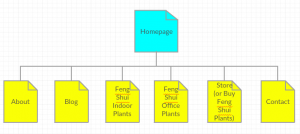— February 13, 2018
As bloggers, whether for a business or independently, you want to see quick and easy blog growth. It discourages you to see poor website traffic and low subscription rates. You put in all this effort into building your blog, so you do whatever you can to see it grow.

Unfortunately, there are a few techniques that some bloggers use to expedite the blog growth process that might, in fact, hinder it instead. I address five of these mistakes here, providing explanations as well as possible solutions to get you going on the right track.
— — —
1) Focusing On Quantity Over Quality
Why this is an issue
Yes, having a consistent and frequent output is key to a successful blog, but consistency doesn’t mean you should write, write, write and publish less-than-great content. By focusing on quantity instead of quality, you’re publishing subpar content that can actually push your audience away rather than reel them in.
What you can do about it
Don’t rush through your content. Find a publish frequency that give you time to create content of value, even if it means just one post a week or bi-monthly. The important point here is to publish high-quality content less often rather than low-quality more often.
2) Using a Free Domain
Why this is an issue
Yes, free is always nice, but it’s not always a good choice. You’re trying to establish yourself or your business with a blog. Unfortunately, you will lose legitimacy with a free domain, such as what you’d find with Blogger and WordPress.com. Free domains are for more recreational blogs. You’ll want to avoid free domains if you’re serious about your work and goals.
What you can do about it
If you want your work to be taken seriously, you have to make the investment in a paid domain name and hosting service. There are many affordable options out there that you can choose from, depending on your own unique needs. PCMag creates a yearly web host comparison chart of several leading services that I recommend you check out if you need help deciding on one.
3) Buying Subscriber Lists
Why this is an issue
Besides the fact that it is a huge ethical no-no, buying subscriber lists can damage your brand far more than help it. Your bought list is filled with accounts that are either fake or have no interest in hearing from you.
Ultimately, the majority of your emails will end up either bouncing or going straight to spam. You might even get reported to the point of losing your email provider. It won’t help your blog traffic or any other interaction, so it’s, in essence, an unethical waste of your time and money.
What you can do about it
Be patient. You’re not going to find immediate surges in subscribers, even though some other bloggers say it’s possible. Their success is a rarity, so it’s best to take a realistic approach.
You should have subscription sign-up forms in places where people can easily access them. This will help your subscription rate considerably. Pop up and static forms using HubSpot, MailChimp, or other services can boost your subscription sign ups.
Also, create content of value to get people interested in learning more. This can be standard blog posts, but you might also consider creating ebooks and other thorough content – resources people have to sign up for to acquire. Create a file, such as a content upgrade, or another gated offer, and build a corresponding landing page as needed.
The more valuable the content, the more likely people will sign up through a form on your site.
4) Publishing Unoriginal Content
Why this is an issue
People who are looking for advice on a particular topic have already seen advice about it elsewhere. If you rehash the same content over again without any original input, you lose in the end. Your subscribers and blog visitors don’t want to be bored by seeing the same ideas published over again on your website. This is especially true if you’re a new blogger.
You also have to be careful about copyrights and plagiarism. If mentioning another article’s content, cite the source. Better yet, write your own ideas about the topic instead of directly quoting another blog.
What you can do about it
It does take more time and effort to write original content, but the rewards are well worth it. If you’re struggling to create original content because you’re new or suffering from writer’s block, there are ways to get around that.
For example, you can use content generator tools or subscribe to other blogs for topic ideas. These approaches are great because they give you customized headline ideas and help you discover what topics you know well.
5) Adding Images Found in Google Search
Why this is an issue
You’re basically stealing images if you just download them from a Google search. Most of the time, the images are copyrighted, and even if they’re not, they belong to someone else. If you want free images, there are ways of finding them legally, but if you take shortcuts, you risk getting into a lot of trouble.
On a different note, using other people’s images instead of creating your own can have a negative effect on your legitimacy. Sometimes, you don’t have the resources to create new imagery, but it’s worth the expense if you can afford it.
What you can do about it
To find free images, such as stock photos, I recommend using Pixabay or another image database. You can also search for images using the Creative Commons, where you can filter based on copyrights and other permissions.
To create your own images, there are many free ways, such as Canva or Pablo by Buffer. There’s also this handy blog image creation article by SEMrush that I highly recommend for non-designer bloggers needing help.
— — —
Wrap-up
The Mistakes Listed:
- Focusing on Quantity Over Quality
- Using a Free Domain
- Buying Subscriber Lists
- Publishing Unoriginal Content
- Adding Images Found in Google Search
What do you think? Was this helpful for your efforts with growing your blog?
Leave a comment with any thoughts or questions!
Digital & Social Articles on Business 2 Community
(49)
Report Post




